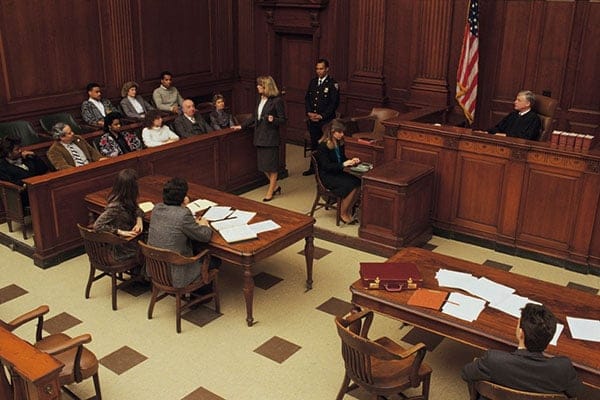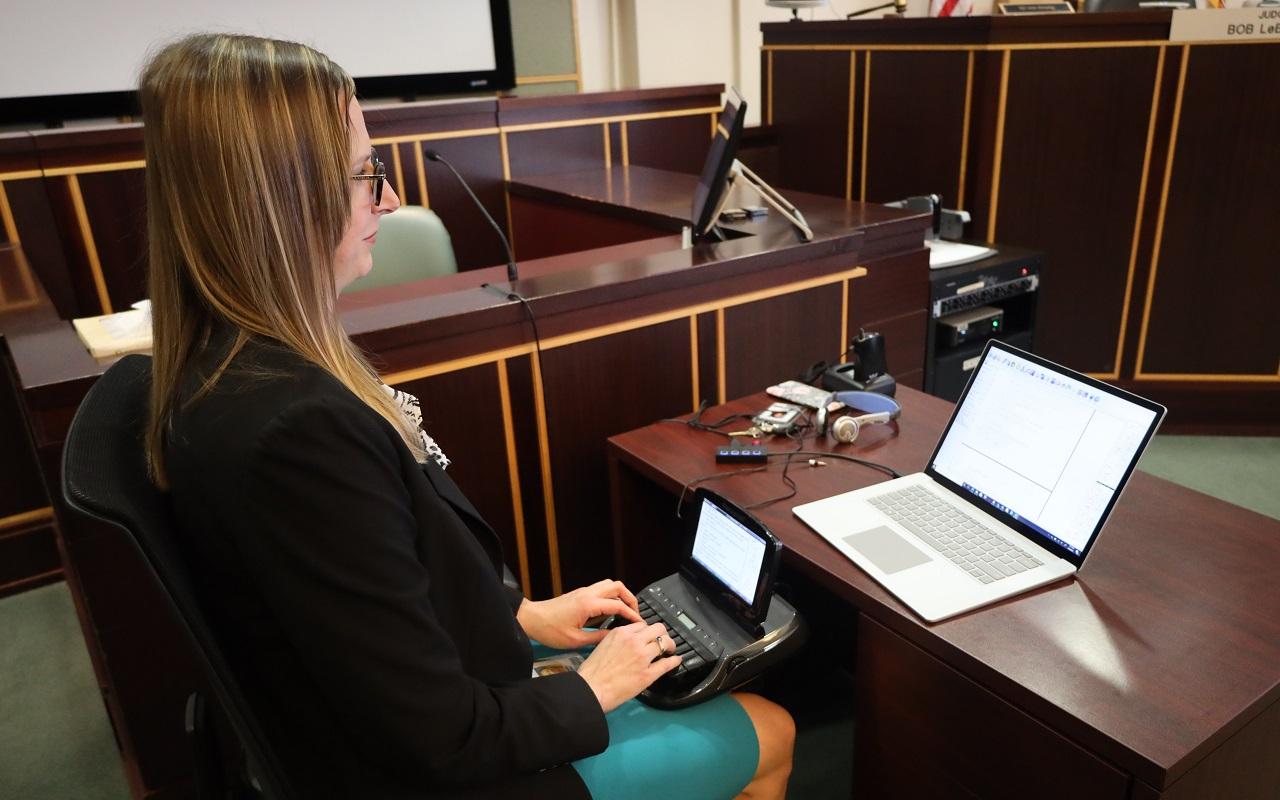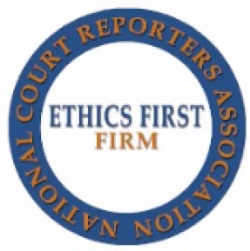Durham court reporting explained: everything you need to know
How Court Reporting Functions: A Step-by-Step Overview to the Legal Process
Court reporting is an important component of the legal system. It entails an organized process that guarantees exact paperwork of proceedings. From prep work to the last shipment of records, each action is necessary. Comprehending how court press reporters run offers understanding into the stability of lawful records. The subtleties of their job can exceptionally impact lawful outcomes, motivating inquiries regarding the approaches and innovations they utilize. What are the particular strategies that define this career?
The Function of Court Reporters in the Legal System
Court reporters play a crucial role in the lawful system by supplying accurate and reliable records of court process. Their work warranties that every spoken word throughout trials, depositions, and hearings is recorded, which is vital for keeping an official document of events. This transcription is essential for appeals, as it enables greater courts to review the procedures and establish if any type of mistakes were made throughout the trial.
Furthermore, court press reporters assist in maintaining the integrity of the legal procedure by developing verbatim records that can be referred to by legal representatives, judges, and other events entailed in a case. They commonly utilize specific devices and software program to capture dialogue with precision. Past the court room, their records can act as essential historic papers, supplying insight into judicial procedures and the legal system's performance. Inevitably, court reporters contribute considerably to openness and liability in lawful issues.
Planning for a Court Reporting Session
Prep work is essential for a successful court reporting session, as it guarantees the accuracy and effectiveness of the transcription process. Stenotype reporter begin by evaluating situation materials, including pleadings and witness lists, to familiarize themselves with the terminology and context. They also ensure that they have the required tools, such as steno devices, notebooks, and back-up devices, on-line.
Before the session, interaction with lawful teams is essential. Reporters typically clear up any specific requests pertaining to format or liked terms. Furthermore, they may arrange to consult with attorneys or witnesses to go over the proceedings and confirm the timetable. Getting here early to set up the equipment permits for repairing prospective technical concerns. Generally, complete preparation not just boosts the press reporter's self-confidence yet also adds substantially to creating a exact and clear record of the legal process.

Recording the Document: Techniques and Tools
Using innovative techniques and trusted devices, stenotype reporter thoroughly capture the talked word during legal process. They employ stenography, an approach involving a specialized maker that enables them to type several audios at the same time, thereby transcribing discussion in actual time. This device, referred to as a steno keyboard, is furnished with secrets that stand for syllables and words, allowing swift and exact input.
In addition to stenography, stenotype reporter might make use of audio recording devices as additional devices. These tools work as back-ups, ensuring that no vital details is shed during proceedings. Additionally, some press reporters include software that enhances their transcription effectiveness, supplying features such as voice acknowledgment and automated formatting.
Appropriate positioning and emphasis are vital; press reporters must maintain interest on all audio speakers, recording subtleties and inflections that add to the record. Through a combination of skill and technology, court reporters copyright the integrity of the legal process by making sure a specific and detailed document of occasions.
Recording the Procedures
Transcribing the proceedings requires stenotype reporter to convert talked discussion right into composed text with extraordinary accuracy and speed. This procedure commonly takes area promptly after the recording has been caught, using specialized software that permits smooth transcription. Stenotype reporter should pay attention diligently to the audio, ensuring that every inflection, pause, and word is accurately stood for in the transcript.
They frequently count on shorthand systems, individual transcription skills, and progressed innovation to promote this task. The environment in which they function can be fast-paced and in some cases chaotic, as lawful proceedings usually include multiple speakers and technical lingo. Stenotype reporter have to likewise keep concentration to record nuances in tone and context that might be vital for the legal record. Ultimately, the accuracy of the transcription is essential, as it functions as a certification for future referral in legal procedures.
Reviewing and Modifying the Transcript
The procedure of evaluating and editing and enhancing the transcript is crucial for ensuring accuracy in court reporting. Stenotype reporter often work together with attorneys to clear up any obscurities and confirm the correctness of the taped declarations. This partnership is vital for keeping the integrity of the lawful document.
Significance of Precision
Precision offers as the cornerstone of efficient court reporting, as also small mistakes can greatly alter the significance of lawful proceedings. The evaluating and modifying procedure is essential in ensuring that transcripts reflect the spoken word with fidelity. Court reporters thoroughly validate names, technical terms, and legal jargon to maintain precision. This attention to detail helps avoid misunderstandings that might impact situation results. Precision promotes count on among legal specialists, clients, and the court, strengthening the honesty of the judicial system. Errors can result in disputes or charms, making it necessary for press reporters to improve their job extensively. Eventually, the quest of accuracy not just improves the dependability of the transcript however likewise supports the standards of the lawful occupation.
Collaboration With Attorneys
Cooperation between stenotype reporter and lawyers is critical during the assessing and modifying phase of records production. This process assures that the final record precisely reflects the talked word and follows legal standards. Lawyers typically review records for particular terms, context, and any type of potential mistakes that could influence the case. Stenotype reporter rely upon attorneys' experience to clear up ambiguous sections or emphasize vital statements. Efficient interaction is essential; lawyers may give comments or request modifications, which court reporters need to address immediately. This collaboration not only improves the quality of the transcript yet also adds to a smoother legal process. Inevitably, collaborative efforts bring about a reputable and specific record, vital for lawful proceedings and future references.
Delivering the Final Transcript to Customers
Upon conclusion of the transcription procedure, court reporters carefully prepare have a peek at this website the last record for delivery to their clients. This final transcript undertakes comprehensive checking to assure precision, as any kind of mistakes could significantly affect legal procedures. Court press reporters layout the document according to the particular demands stated by the clients or legal firms, consisting of pagination, indexing, and any kind of needed displays.

Lastly, court reporters may provide a cover letter summing up vital information and using additional support if needed. This extensive method guarantees that customers get a refined, accurate, and easily accessible records, vital for their legal demands.
Often Asked Questions
What Credentials Are Required to Become a Court Reporter?
To come to be a stenotype reporter, individuals generally require a secondary school diploma, completion of a court reporting program, and qualification or licensure, depending upon state requirements. durham court reporting. Effectiveness in shorthand and innovation is also necessary for success
How much time Does It Take to Full Court Reporting Training?
Commonly, finishing court reporting training takes in between 18 months to four years, depending on the program's intensity, the pupil's speed, and Find Out More the details demands of the territory in which they want to exercise.

What Is the Average Income of a Stenotype Reporter?
The ordinary salary of a stenotype reporter differs by area and experience, usually varying from $45,000 to $100,000 annually (durham court reporting). Aspects such as field of expertise and demand can considerably affect their earnings in different areas
Are Court Reporters Required to Have Certification?
Stenotype reporter are commonly required to acquire accreditation, which assures they have the necessary skills and understanding for exact transcription. Qualification requirements can vary by state or territory, mirroring specialist standards within the legal neighborhood.
Can Court Reporters Work From Another Location or Freelance?
Stenotype reporter can function from another location or freelance, providing flexibility in their profession. Numerous use modern technology to record proceedings from various locations, permitting diverse opportunities in the legal field while maintaining a work-life balance.
Court press reporters play a vital function in the legal system by offering reliable and exact records of court process. In addition, court press reporters help in protecting the integrity of the legal procedure by developing verbatim documents that can be referred to by attorneys, courts, and other parties involved in a case. Making use of innovative methods and reputable equipment, court reporters diligently record the spoken word during lawful procedures. Court link press reporters need to also maintain focus to catch nuances in tone and context that might be vital for the legal document. To end up being a court reporter, individuals typically require a high school diploma, completion of a court reporting program, and certification or licensure, depending on state needs.